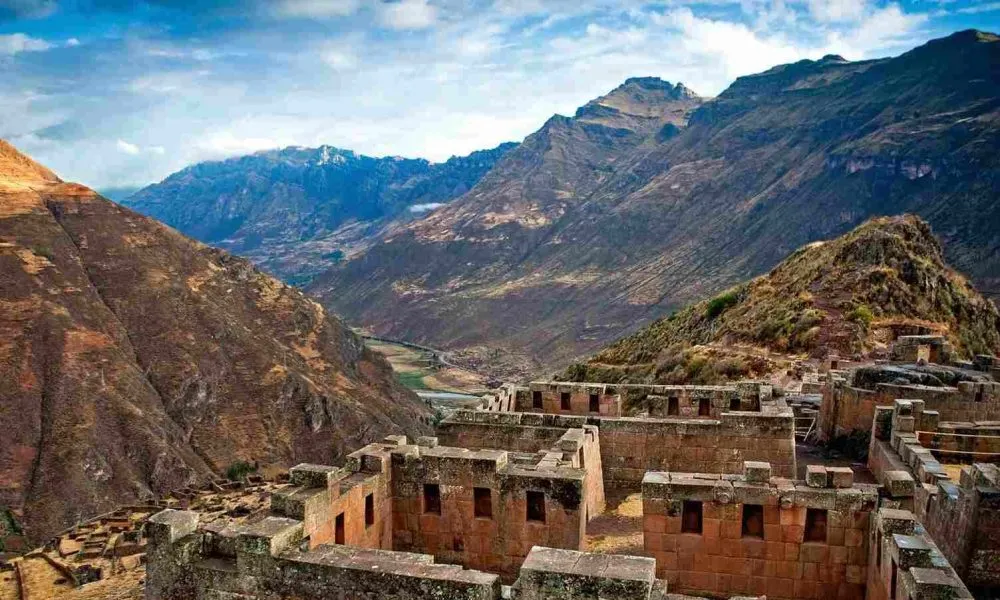
The Sacred Valley of the Incas, located near Cusco, is one of Peru’s most breathtaking and historically rich regions. Stretching from Pisac to Ollantaytambo, this fertile valley is home to majestic landscapes, vibrant villages, and ancient Inca sites that provide a deeper understanding of the region’s cultural significance. With its stunning mountain views, colorful markets, and opportunities for adventure, the Sacred Valley is a must-visit for travelers exploring Peru.
Why Is It Called the Sacred Valley?
The Sacred Valleyheld immense importance to the Incas due to its fertile land and strategic location. The Urubamba River, which runs through the valley, was considered sacred and symbolically connected to the Milky Way. The region served as an agricultural hub, producing maize and other essential crops for the empire.
Top Attractions in the Sacred Valley
1. Pisac
Pisac is famous for its impressive Inca ruins and vibrant market.
- Pisac Archaeological Site: Perched high on a hill, these well-preserved ruins feature agricultural terraces, ceremonial areas, and breathtaking views of the valley below.
- Pisac Market: One of the largest and most colorful markets in the region, it’s the perfect place to shop for handmade crafts, textiles, and souvenirs.
2. Ollantaytambo
This picturesque town is known for its cobblestone streets, ancient ruins, and Inca architecture.
- Ollantaytambo Fortress: A stunning example of Inca engineering, this site features massive terraces and a ceremonial temple area. The fortress played a crucial role in the resistance against Spanish conquistadors.
- Town Center: Ollantaytambo is one of the few remaining places where people still live in Inca-built homes.
3. Moray
An intriguing archaeological site, Moray consists of circular terraces believed to have been used as an agricultural laboratory by the Incas. The temperature variation between the terraces allowed them to experiment with different crops.
4. Maras Salt Mines (Salineras de Maras)
These ancient salt pans, still in use today, cascade down a hillside like a patchwork of white pools. Visitors can learn about the traditional methods used to harvest salt and capture stunning photographs.
5. Chinchero
Known as the “Birthplace of the Rainbow,” Chinchero is a charming village with a beautiful colonial church and impressive Inca terraces. The town is also famous for its traditional weaving workshops.
Activities and Adventures
- Hiking and Trekking: The Sacred Valley offers numerous trails for hikers of all levels, including day hikes and multi-day treks.
- Mountain Biking: Explore the valley on two wheels with guided biking tours through scenic landscapes and historical sites.
- Rafting: The Urubamba River provides exciting white-water rafting opportunities for adventure seekers.
- Cultural Workshops: Participate in weaving classes or cooking workshops to learn about traditional Andean techniques.
Cultural Experiences in the Sacred Valley
The Sacred Valley is a living cultural landscape where ancient traditions are still practiced.
- Andean Weaving Workshops: Learn the intricate techniques of traditional textile-making from local artisans.
- Agricultural Experiences: Visit local farms to see how crops like quinoa and potatoes are cultivated.
- Community Tourism: Spend time with indigenous communities and gain insight into their way of life.
Best Time to Visit the Sacred Valley
The best time to visit the Sacred Valley is during the dry season, from May to September. The weather is clear and sunny, making it ideal for outdoor activities and exploration. The rainy season, from November to March, brings lush green landscapes but can make travel more challenging.
Practical Tips for Visiting the Sacred Valley
- Transportation: Hire a private driver, join a guided tour, or use public transportation to navigate the valley.
- Altitude: The valley’s elevation is lower than Cusco, making it a good place to acclimate to the altitude before heading to higher destinations like Machu Picchu.
- Currency: The Peruvian sol (PEN) is accepted everywhere, but it’s a good idea to carry small bills for markets and rural areas.
- Safety: The Sacred Valley is generally safe, but as always, keep an eye on your belongings.
Accommodation in the Sacred Valley
The valley offers a range of accommodations, from rustic lodges to luxury resorts. Staying in Pisac, Urubamba, or Ollantaytambo provides convenient access to the area’s attractions.
Find your ideal accommodation in the Sacred Valley on Booking.com.
Flight Information
Fly into Cusco’s Alejandro Velasco Astete International Airport (CUZ) and take ground transportation to the Sacred Valley.
Plan your flights to Cusco using Skyscanner.
Conclusion
The Sacred Valley is a destination that captivates visitors with its stunning landscapes, rich history, and vibrant culture. Whether you’re exploring ancient ruins, shopping at colorful markets, or immersing yourself in local traditions, the valley offers a unique and unforgettable experience. A visit to this enchanting region provides a deeper appreciation of Peru’s extraordinary heritage and natural beauty.





